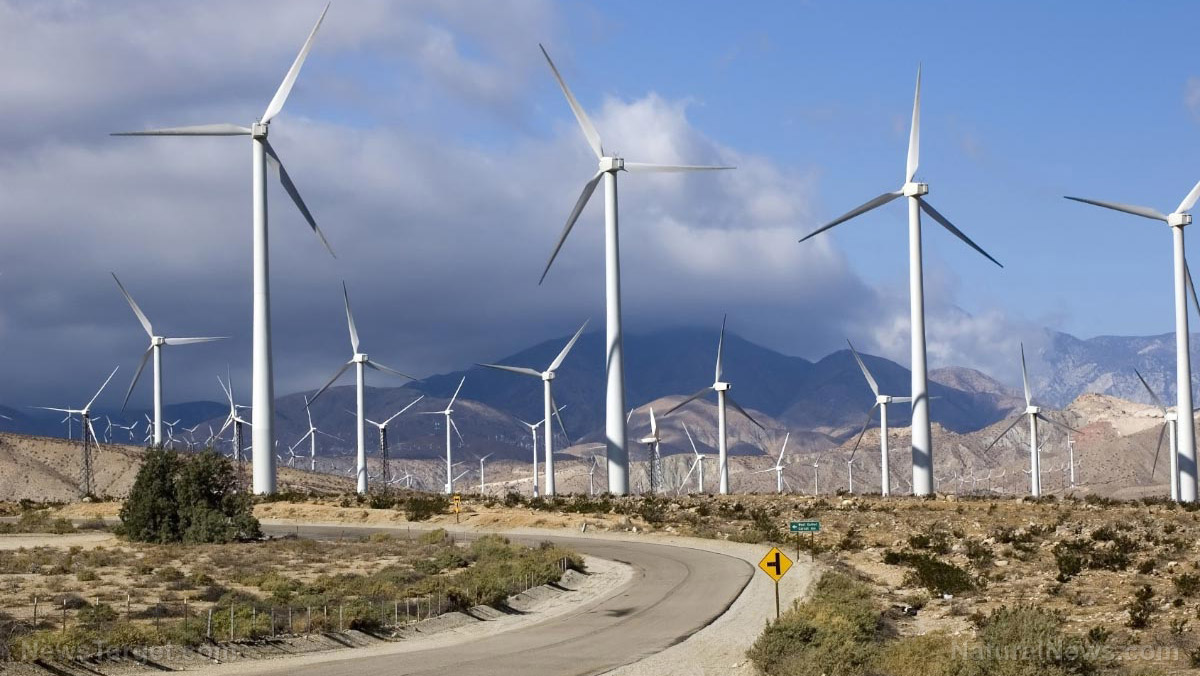 Parler
Parler Gab
Gab
- Wind turbines kill hundreds of thousands to millions of bats and birds annually worldwide. In the U.S. alone, 500,000 bats die each year, comparable to seabird deaths from the Deepwater Horizon oil spill. Endangered species like golden eagles, griffon vultures and hoary bats face local extinction risks.
- Turbines alter animal behavior, microclimates and soil health, reducing earthworm populations and vegetation. In China, a single wind turbine increases reduced bird abundance by 9.75 percent and species richness by 12.2 percent. Nearly 50 percent of studied bird species in California showed population declines linked to turbines.
- Wind proponents argue climate change is a bigger threat, but mitigation efforts (site avoidance, deterrents) remain inconsistent and untested at scale. Habitat compensation policies exist but fail to offset large-scale ecological damage.
- While turbines cause fewer bird deaths per gigawatt-hour than fossil fuels (1.31 vs. 5.2 for coal), their rapid expansion threatens ecosystems. Proposed wind farms covering 13 percent of U.S. land could have "dramatic consequences for biodiversity."
- Strategic placement, rigorous environmental assessments and investment in less harmful renewables are urgently needed. Net Zero policies must not sacrifice ecosystems—wind energy's "green" label ignores its devastating toll on wildlife.
Mass wildlife fatalities
The data is staggering:- Up to one million bats are killed annually in countries with high turbine density.
- 500,000 bats die each year in the U.S. alone—nearly matching the estimated 600,000 seabirds killed in the BP Deepwater Horizon oil spill.
- 30,000 bats perish yearly in the U.K., 50,000 in Canada and 200,000 in Germany.
- Large raptors, including golden eagles, face local extinction risks due to turbine collisions.
Cascading ecosystem disruptions
Beyond direct fatalities, wind turbines alter animal behavior, physiology and habitat integrity. Professor Christian Voigt, one of the study's authors, has previously warned that turbine-induced insect fatalities could contribute to species extinction. His 2022 research found that turbines modify microclimates and reduce earthworm populations, degrading soil quality and vegetation. The report highlights population declines in vulnerable species:- Cinereous and griffon vultures in Europe face collapse risks.
- Hoary bats in North America and black harriers in South Africa are declining.
- Nearly 50 percent of bird species studied in California showed turbine-linked population drops.
Industry response and mitigation efforts
Wind energy proponents argue that climate change poses a greater threat to biodiversity than turbines. The UK Bat Conservation Trust states: "We need energy-efficient housing and renewable energy to help mitigate climate change for the benefit of bats, people and the wider environment." However, mitigation strategies—such as avoiding sensitive sites, deterring wildlife and habitat compensation—remain inconsistent globally. The Nature study notes that while these measures help, their effectiveness is "untested" against large-scale wind farm expansion.Carbon reduction vs. biodiversity loss
Despite ecological harm, wind power's carbon benefits are undeniable. Research shows that wind turbines cause far fewer bird fatalities per gigawatt-hour than fossil fuels (1.31 deaths/GWh vs. 5.2 for coal). In China, the economic gains from carbon reduction outweigh biodiversity losses when compared to coal power. Yet critics argue that Net Zero policies prioritize energy goals over conservation. The Nature paper warns that dedicating 13 percent of U.S. land to wind farms—as proposed in a 2021 report—could have "dramatic consequences for biodiversity."A call for balanced energy policy
As nations race to decarbonize, these studies underscore the need for strategic wind farm placement, rigorous environmental assessments and investment in less harmful renewables. The question remains: Can we achieve climate goals without sacrificing irreplaceable ecosystems? For now, the science is clear—wind energy is not as "green" as advertised. The true cost of Net Zero may be paid in blood: the blood of bats, birds and the delicate web of life they sustain. Watch the video below about the wind turbine fraud. This video is from the Aussie Flyers channel on Brighteon.com. Sources include: TheDailySceptic.org BrightU.ai Nature.com ScienceDirect.com Brighteon.comU.S. intensifies push for Hungary to end Russian oil dependency
By Patrick Lewis // Share
Zelensky threatens to intensify long-range strikes deep inside Russia
By Belle Carter // Share
Indonesia’s worsening RADIOACTIVE CONTAMINATION crisis threatens global food supply
By Ava Grace // Share
Walking for 15 minutes straight beats short bursts for heart health, researchers say
By Cassie B. // Share
Water woes for Wisconsin homeowner expose a growing public health crisis
By Patrick Lewis // Share
Zelensky threatens to intensify long-range strikes deep inside Russia
By bellecarter // Share
Amazon cuts 14,000 jobs as more Americans now rely on food banks
By gregoryv // Share
Herbs from India's tribal pouch: Ginger
By newseditors // Share
Musk's Grokipedia just shattered Wikipedia's monopoly on "neutral" facts
By willowt // Share
The red screen of death: Google's automated hit on a rival it couldn't acquire
By willowt // Share










